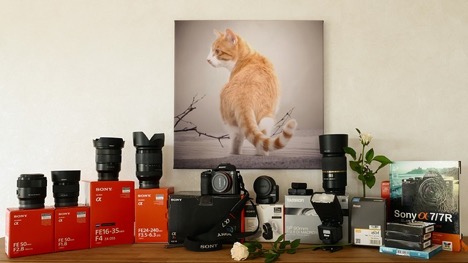Manufacturers of smartphones, DSLRs, digital camcorders often use numbers to promote their products. Are you familiar with 8 megapixels, 720p resolution, and 4K? In this article, let’s what those figures mean in picture quality and video resolution.
An Overview About Picture Quality
When we talk about picture quality, people usually refer it to the ingrained quality of the image. Many people evaluate and categorize pictures based on pixels. Pixels are tiny squares that are fused together like a puzzle to make a photograph.
The tiny squares usually determine the resolution of the image. One megapixel is equal to 1 million pixels. A 12-megapixel camera would contain about 12 million tiny squares of data per inch.
You might think that a 12-megapixel picture has a higher picture quality than an 8-megapixel one, but you’re wrong. There are several factors that contribute to the quality of the picture.
Proper lighting, for example, plays an important part in the picture quality. Let’s say you take a picture from a 12-megapixel camera under poor lighting conditions. The output would still be inferior compared to a picture taken from an 8-megapixel camera under good lighting conditions. Though, these issues can be handled by going for a sun flare overlay giving your footage a better look.
The size of the image sensor also affects the image quality of a certain camera. A larger image sensor means larger light receptors to accurately estimate the light going into the lens from the scene. In other words, a bigger image sensor produces more accurate colors than a smaller one.
Understanding The Video Resolution
The resolution doesn’t refer to the screen’s number of pixels, but it refers to the number of pixels for every unit of area. More specifically, it refers to the number of pixels laid out horizontally and vertically on a monitor. For example, 1280 x 720 = 921,600 pixels.
For comparison, a 480p video has 480 lines that are each 852 pixels wide. This means that this resolution isn’t as sharp as the same video at 720p and can be viewed on a much smaller screen.
Here’s an overview of the various kinds of resolution that you can use:
360p: This resolution is great for smartphones since they consume fewer data. When viewed on larger screens, the video may appear slightly blurry.
480p: If you want to burn a DVD, 480p is suitable as it will provide your disc the highest quality enabled by any DVD burner or disc. This resolution also plays nicely on laptops, desktop monitors, and smaller televisions.
720p: True high-definition begins at this resolution. Also known as HD, this is the resolution that many HD television channels use. Videos at this resolution tend to be crisp and sharp.
1080p: Also known as Full HD, this resolution has a crisper and sharper video quality than 720p. It features a crystal clear playback and recommended for larger screens.
2K: This is close to 1080p but has a different resolution standard. While 1080p has 1920 horizontal pixels, 2K has 2048 horizontal pixels.
1440p: Also known as Quad HD (QHD) resolution, this resolution is usually seen on high-end smartphones. Compared to 720p, 1440p four times crisper and sharper.
4K or Ultra HD: Ultra HD is 3840 x 2160 while the “real” 4K is 4096 x 2160.
Different Types Of 4K Cameras
To get a better understanding of how cameras compare to smartphones and DSLRs, let’s separate the technology into three unique categories:
Consumer: This is the most common type of 4K cameras. You can find them on the back of current models of smartphones, like iPhone 6s, and top action cameras. Most of these products record at the ultra high definition (UHD) specification rather than the real 4K because UHD is naturally compatible with 1080p displays and consumer-grade cinema setups.
Prosumer: 4K camcorders under this type are usually personal, handheld units that look the same with camcorders people used for a long time. They have a large sensor and lens upgrades. More recent DSLRs with 4K video capacities can also be included in this category. It’s important to note that many DSLRs are normally meant to take still pictures then recording 4k videos the next.
Professional: This category includes the most expensive units, which can go as much as $250,000 for high-class models. These are the cameras used in making motion movies in Hollywood. You can customize from hundreds of various lenses and professional lighting systems.
The Takeaway
For the longest time, we rely on camcorders to record 4K videos. But now, there are smartphones that offer the same feature. Many smartphones record at the same frames per second.
Keep in mind that pixels shouldn’t be taken at face value. Even if a smartphone can capture at the same resolution as a camcorder, the output wouldn’t be of similar quality. The size of the sensor matters.
In terms of pictures, nothing beats a good DSLR. A DSLR can capture a wider range of color than smartphones and camcorders.
